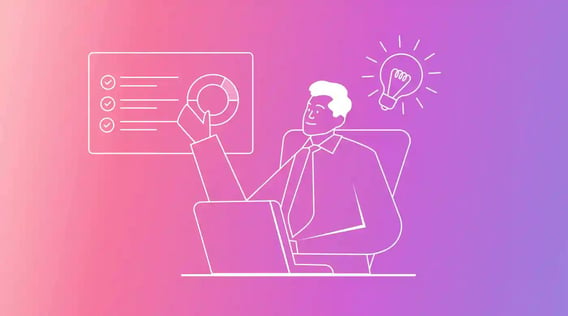Procrastination is a familiar nemesis to many of us.
Research over the years has made it clear: a lot of us procrastinate. One survey found that it’s a daily problem for 88% of the workforce.
According to the grandmaster on procrastination, Dr. Piers Steel, a professor of human resources and organizational dynamics and author of The Procrastination Equation, about 20% of the population are habitual procrastinators and pretty much everyone procrastinates a little bit.
So, how do we break old patterns and welcome the opposite of procrastination as we continue on our quest to become more action-oriented, productive, and impactful?
Read on to learn the science behind procrastination and practical strategies to help you overcome this challenge.
What is procrastination?
“Procrastination” means delaying or postponing unpleasant tasks for later, despite knowing that there may be negative consequences.
Essentially, it’s a gap between intention and action, where one chooses the enjoyable over the important.
What is the opposite of procrastination?
When we think of the opposite of a procrastinator, we often think of a proactive go-getter. These individuals can take immediate and decisive action to start and complete tasks on time. Usually, they are motivated by a clear understanding of their goals and know the necessary steps to achieve those goals.
Pre-crastination vs. productivity: how not procrastinating can go wrong
Proactively starting a task is typically viewed in a positive light, but can it be a bad thing in some cases?
Surprisingly, yes. Far less talked-about, pre-crastination is the tendency to rush into tasks impulsively. It involves completing work quickly but without strategic planning or consideration of priorities.
Rushing to finish tasks can often lead to a harried life with negative outcomes and wasted time correcting errors or oversights. True productivity, in contrast, takes a balanced approach where tasks are handled with deliberation. Important and urgent tasks are prioritized carefully, and with this comes true efficiency.
Fighting procrastination is not only about doing things quickly but also doing them in the right way.
The science behind procrastination
Why do we procrastinate?
The answer is more complex than simply, “it’s a habit.” It has to do with emotional regulation and neurological processes. People who procrastinate often use it to cope with challenging or overwhelming emotions and tasks.
Research suggests that our brain is always trying to minimize perceived threats and maximize rewards. So, when work is intimidating, some employees procrastinate because they want to avoid the discomfort of completing their tasks.
Neurologically, procrastination involves a battle between the limbic system, which craves immediate gratification, and the prefrontal cortex, which is responsible for decision-making and planning. When the limbic system wins this tug-of-war, procrastination is the result.
Chronic procrastinators often have a more active limbic system than others, meaning they value immediate gratification over long-term benefits. Starting with small, manageable tasks will help you counteract this mindset. As a result, you’ll retrain your brain and develop better habits.
The procrastination action line
James Clear, author of the #1 New York Times bestseller Atomic Habits, writes, “The problem is not doing the work, it’s starting the work.”
The dread of facing a daunting task is often greater than the physical effort required to finish it. So, once we actually get started, more often than not, it’s less difficult than we imagined.
Clear talks about the “procrastination action line,” which represents the psychological threshold at which the pain or discomfort of not doing a task becomes greater than the discomfort of doing it. That’s when we take action.
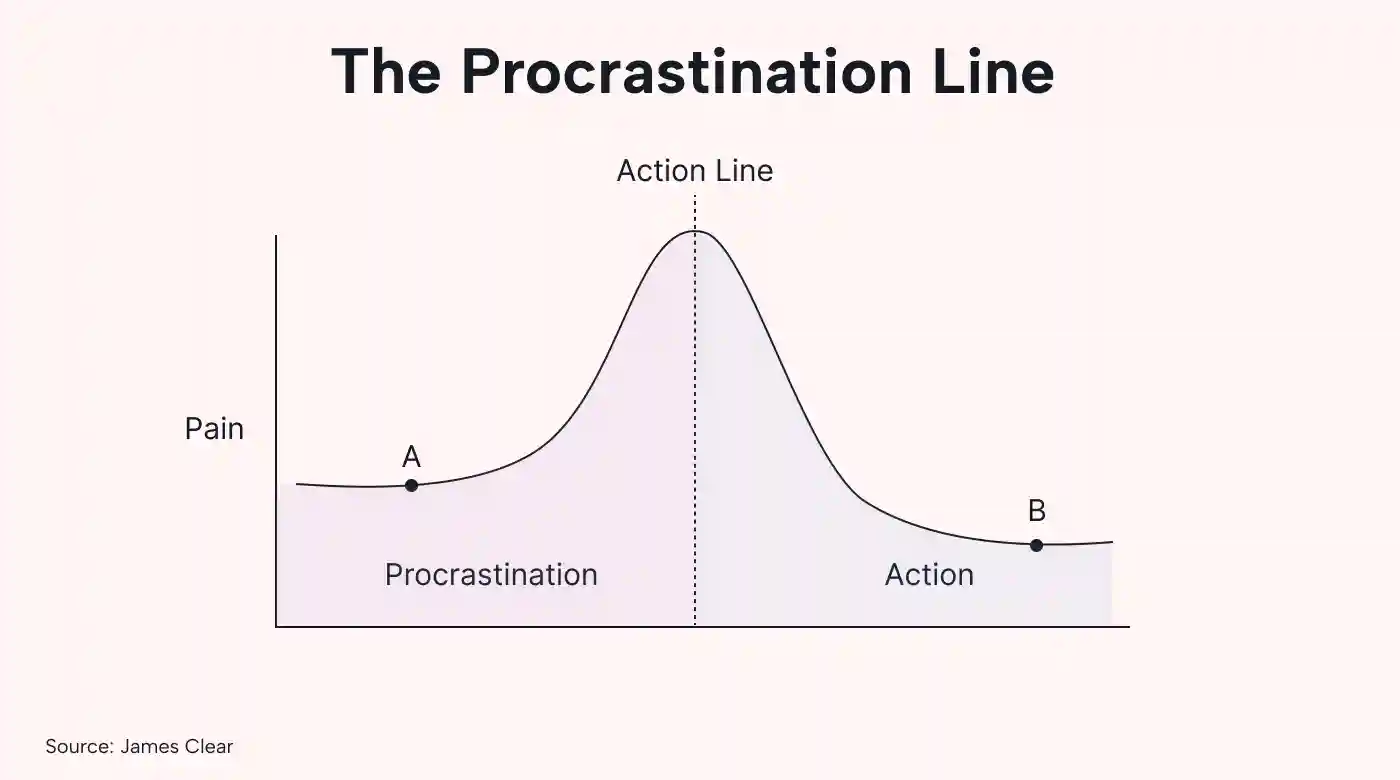 |
Factors such as deadlines, perceived difficulty, personal relevance, and stress tolerance can influence this line.
A key strategy in overcoming procrastination is to increase motivation or reduce task aversion. We’ll provide tips on how to do these things later in the article.
4 qualities that are the opposite of procrastination
Here are the four most important qualities that non-procrastinators share:
1. A goal-oriented mindset
A goal-oriented mindset is key to ongoing motivation.
Productive people know that they need to set clear, achievable objectives to guide their actions. Their actions then become meaningful and deliberate, as each step is taken to achieve those goals.
These individuals have developed a mindset that gives them a deep sense of purpose and direction. They know why they're doing what they’re doing. As a result, they’re more committed to the tasks and less likely to procrastinate.
2. Efficient decision-making
Non-procrastinators can evaluate options quickly and effectively. They don’t let themselves fall into the choice paralysis loop that often causes procrastination. There’s a balance between deliberation and action.
3. Adaptive time management
Research shows those with a present-oriented attitude toward time are more likely to procrastinate. With a future-oriented perspective, on the other hand, you’re more in control and less likely to procrastinate.
Planning ahead and using a flexible yet structured schedule encourages you to be future-minded. You stay productive because you have a framework in place that helps you adapt to what the future brings, including challenging tasks and change.
4. Persistent focus
Productive people are able to maintain their attention on the task at hand. Instead of being easily distracted by daily changes and interruptions, they keep their mental energy directed toward completing tasks, even when immediate rewards aren’t apparent.
This persistent focus allows these individuals work through challenges and distractions without losing sight of their objectives.
5 problems procrastination causes
Procrastination often seems harmless. But over time, it can lead to significant consequences in both your professional and personal life. Here are just a few of them:
1. Reduced productivity and performance
When difficult tasks are pushed to the very last minute, we often focus so intensely on completing them in time that we rush through the work, sacrificing attention to detail. Or sometimes, we just flat out miss the deadline.
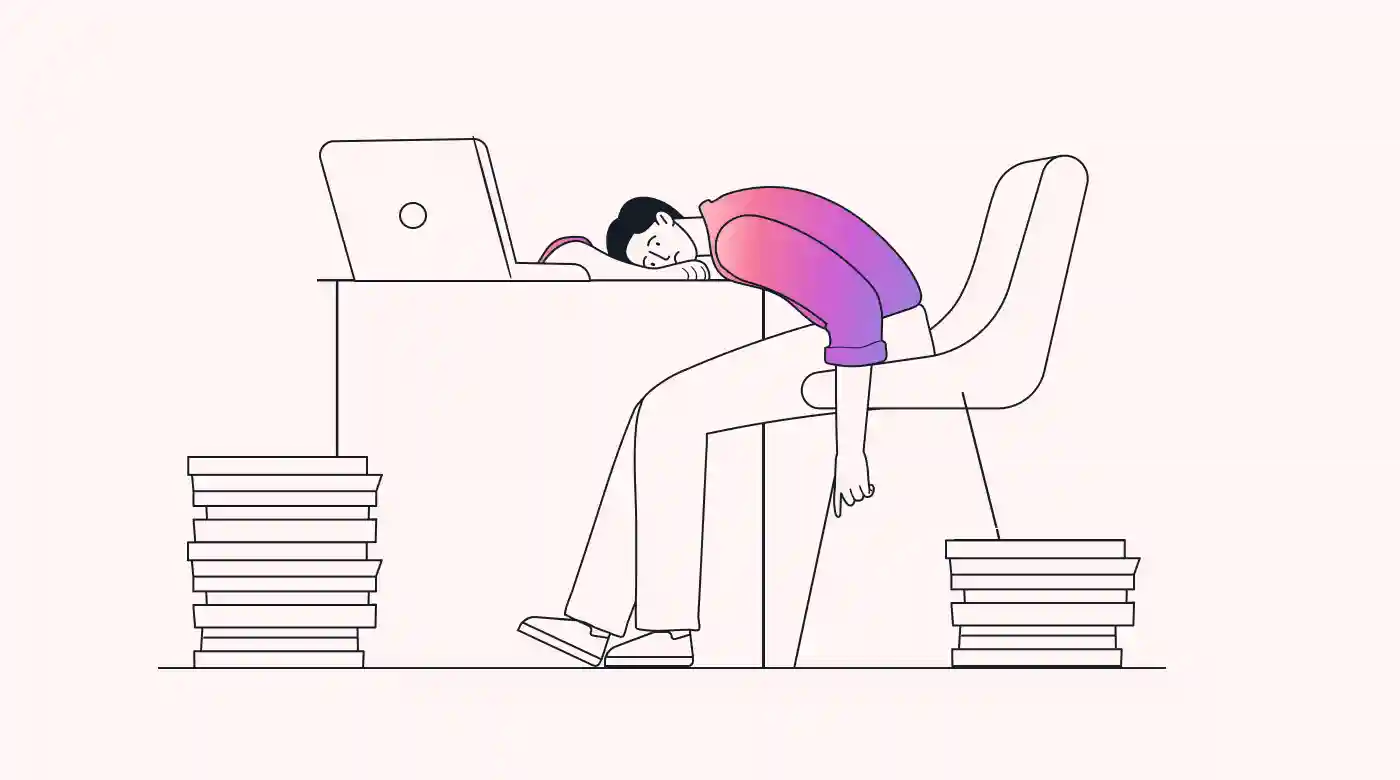 |
Procrastination seriously disrupts workflow for not just yourself but also your teammates who depend on you to finish your part of the job. The worst part is that, as these trivial tasks pile up, they become even harder to tackle.
2. Increased stress and anxiety
Chronic procrastination is the product of a buildup of tasks and looming deadlines, which can significantly increase stress levels and anxiety. The overwhelming feeling of being behind schedule and unable to complete tasks can then lead to even more procrastination.
The constant awareness of unfinished tasks can also lead to feelings of guilt. This guilt, paired with growing anxiety about impending deadlines, causes more emotional turmoil.
3. Negative impact on relationships
Procrastination can negatively affect both work and personal relationships.
In a work setting, it can lead to missed deadlines and a bigger burden on your colleagues, often resulting in tense work relationships and low team morale.
In your personal life, constantly deferring responsibilities or not following through on your word can mean broken promises and unmet commitments. These behaviors not only disappoint but also hurt your loved ones.
Frequent procrastination will earn you a reputation for unreliability, which, in turn, can cause conflict and distrust among your colleagues, friends, and family members.
4. Mental and physical health consequences
There are severe mental consequences associated with chronic procrastination and the feeling of helplessness over unfinished tasks, including increased risk of depression, anxiety, and low self-esteem. Over time, this continuous state can hurt your self-confidence and negatively affect your self-perception.
Not only that, but procrastination can also greatly impact your physical health. For instance, it can contribute to insomnia, a weakened immune system, or stress-induced conditions like headaches and gastrointestinal problems.
5. Stagnant career growth
It’s difficult to get your employers to look at you with confidence and trust when you constantly procrastinate and turn in subpar work. This can impede your professional development, resulting in missed opportunities, lack of recognition, or even job loss.
Procrastination can also limit opportunities for career advancement, especially when it comes to leadership roles.
8 tips to stop procrastination and make room for productivity
At this point, you might be wondering, “So, how do I stop procrastinating?”
Use the proven tips below to help you achieve the opposite of procrastination.
1. Set clear, achievable goals
We mentioned that productive people often have clearly defined and achievable goals. To develop this habit, try to set SMART goals.
SMART goals are specific, measurable, achievable, relevant, and time-bound. They are designed to encourage you to take action.
For example, if you wanted to write a year-end financial report, your SMART goals for this task might look something like this:
I’ll compile a comprehensive year-end financial report summarizing our 2024 fiscal year performance. I'll measure progress by tracking each section’s completion at the end of the day. Every day for the next two weeks, I’ll allocate three hours to this task and coordinate with the relevant team members to finish the report by the end of February. This goal aligns with my role as a financial analyst and supports our company’s financial objectives.
Using a progress tracker can help you measure your progress against your set goals. This keeps you accountable and allows you to adjust your task schedule according to your goals for the day, week, or month.
2. Break tasks into smaller steps
When we’re faced with a big, important project, we often feel scared and overwhelmed because we don’t know where to begin.
Breaking down complex tasks into smaller, more manageable steps can make them less overwhelming and more approachable.
Motion prioritizes tasks by their importance, helping you know exactly what to do first. There’s no more uncertainty about where to start and what to do next when it’s all laid out in your schedule. Clear task priorities simplify the decision-making process and make it easier to take action.
3. Make rewards more immediate
Do you know how scientists train rats to learn new behaviors quickly? They motivate them with an immediate reward, like a piece of cheese.
Humans work the same way.
Giving ourselves an immediate reward for completing a task can motivate action and build a habit, as it taps into our natural tendency to seek pleasure and avoid pain.
For instance, for each task you finish, reward yourself with a five-minute break.
A bonus tip to further reinforce this idea is to schedule immediate rewards for task completion on your Motion Calendar so that you’re constantly reminded that there’s something good waiting for you when you finish your task.
4. Develop a structured schedule
Having a clear plan is the key to a productive day. It keeps you focused and on track, reducing the idle time that can otherwise lead to procrastination.
A structured schedule also improves your time management and helps ensure that your most important tasks are prioritized and completed promptly.
Motion’s intelligent task manager automatically plans your day for you, ensuring that every day is the most productive it can be. And if interruptions or emergencies come up, Motion automatically restructures your schedule so you never feel like your day’s been thrown off track.
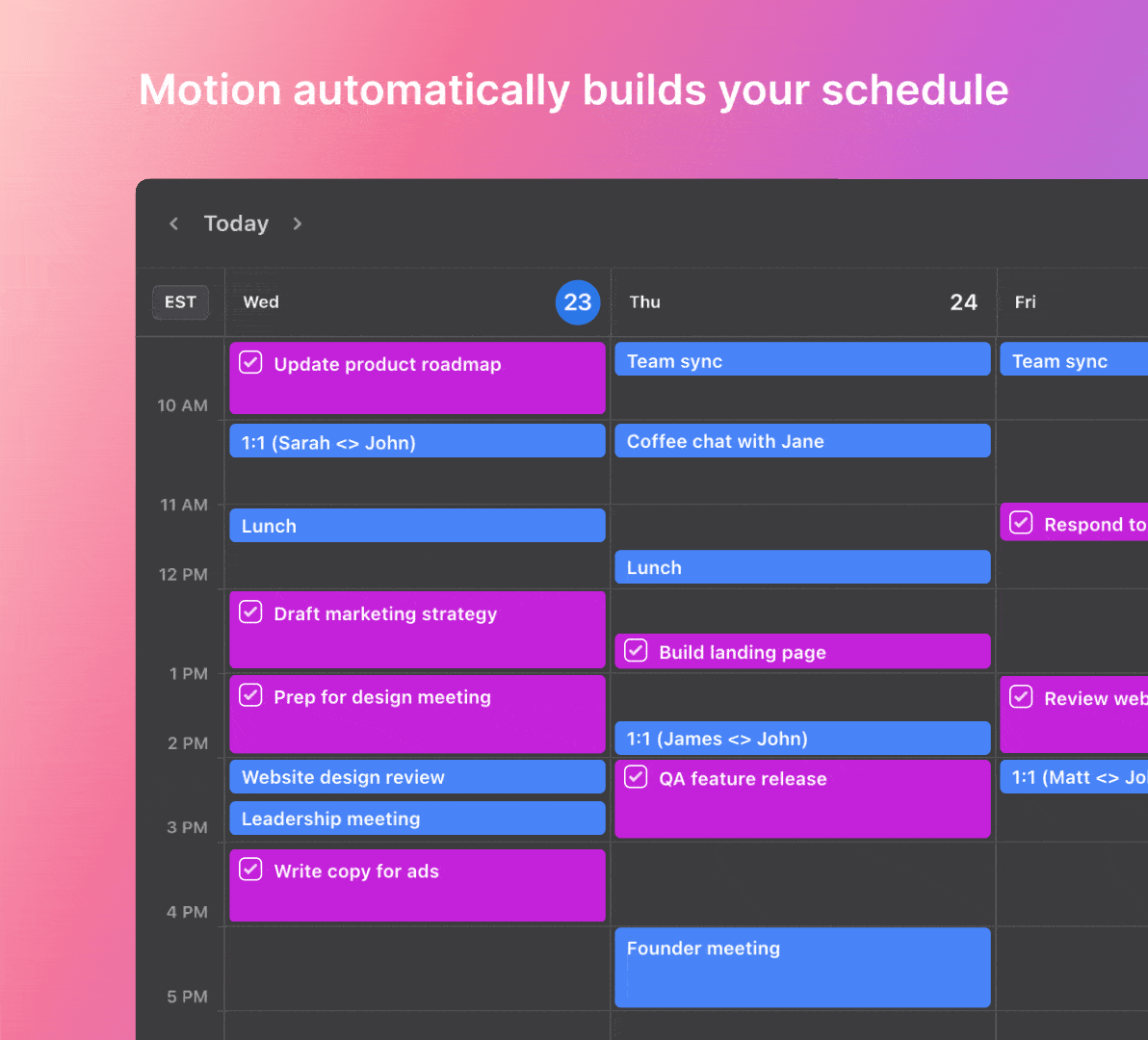 |
5. Use implementation intentions
Implementation intentions are a great way to turn intentions into actions. By planning the specifics of when, where, and how to complete a task, you increase the likelihood that you’ll follow through.
Use Motion to schedule specific tasks and hold yourself accountable for completing them by their intended deadlines. Motion will also remind you when due dates are coming up, helping you stay on top of your commitments.
6. Try time-blocking techniques
Allocating specific time blocks for tasks and sticking to this schedule can improve your focus and productivity.
Time blocking refers to setting aside a specific amount of time to focus on one task instead of switching between multiple. This technique works for many people because it minimizes distractions.
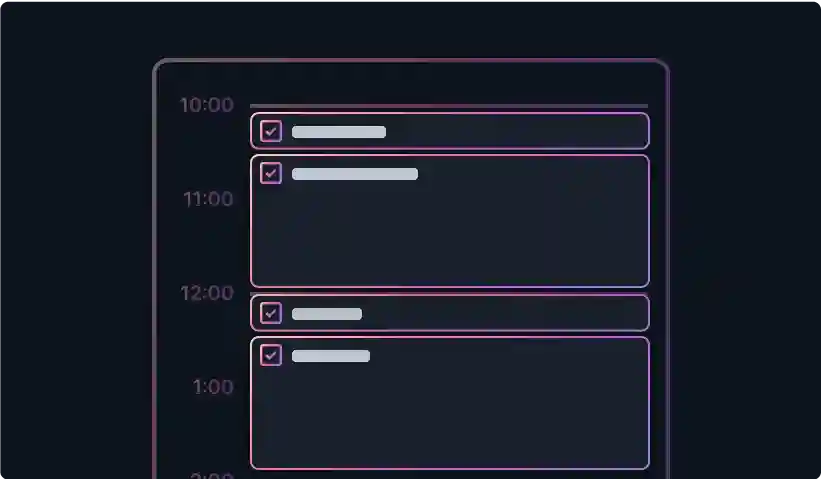 |
Motion can block time for tasks on your schedule, helping you stay concentrated on one task at a time and increasing the amount of work you complete as a whole.
7. Learn self-compassion
We often become overly harsh, judgemental, or wracked with guilt when we don’t finish our to-do list. However, it’s important to treat ourselves with kindness and understanding.
Self-compassion and keeping in mind that nobody’s perfect can reduce our fear of failure and self-criticism.
Remember, don’t rush into each new task or project — you might just fall head-first into pre-crastination mode.
Taking periodic breaks can remind you to breathe and relax after deep work sessions. It also allows your brain to reset before you tackle your next work task.
8. Take control with a project management tool
Project management tools exist to help project managers and their teams better organize their workloads and avoid procrastination.
With a centralized platform, you can more efficiently and effectively manage tasks, timelines, and responsibilities.
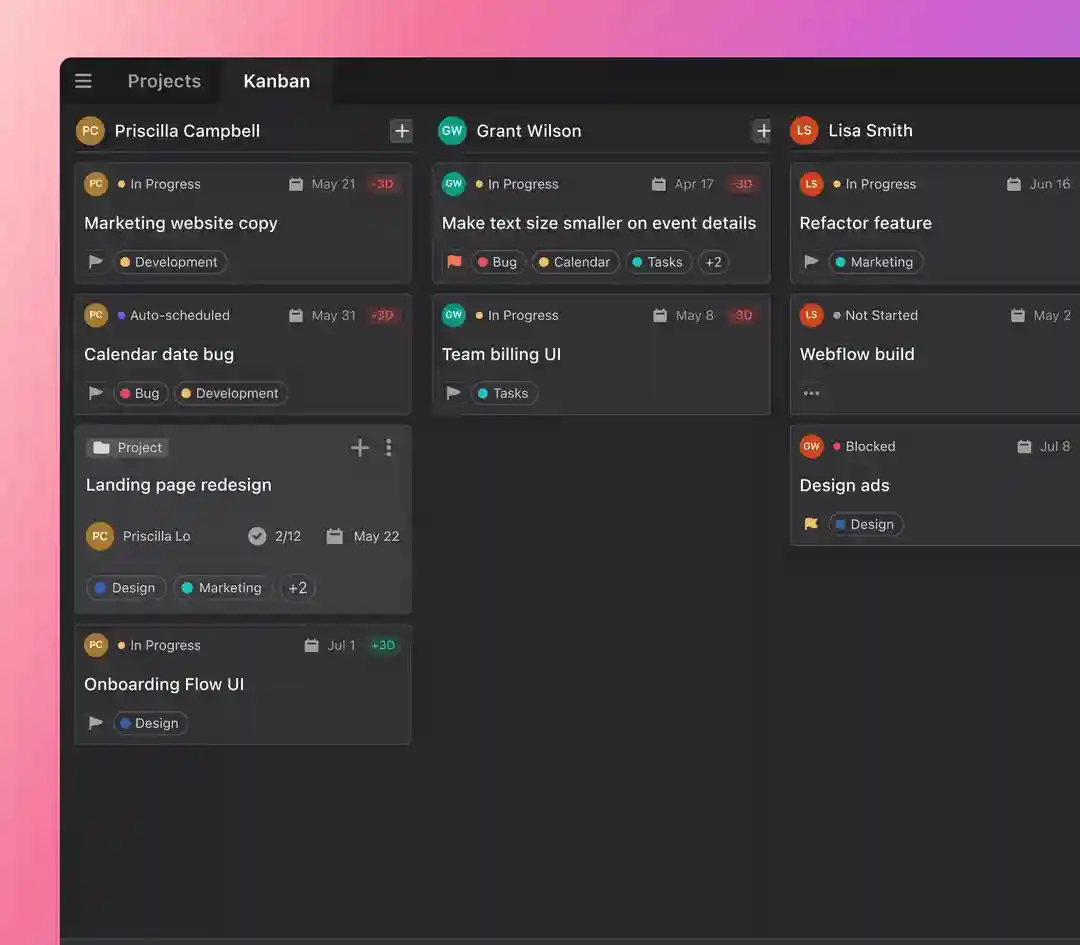 |
Use Motion’s comprehensive project manager to prioritize, track, delegate, and manage tasks. See your projects and tasks clearly and maintain a well-structured workflow to avoid procrastination and boost your productivity sustainably.
Avoid chronic procrastination with Motion
Start implementing these strategies for stopping procrastination today and keep your momentum rolling with Motion. To kick your productivity up a notch right now, sign up for Motion’s 7-day free trial.

Vicki Chen is a content writer and marketer using proven storytelling methods to create high-quality copy and content for SaaS companies. When she's not writing, she's spending time with Taco, her rescue dog.
